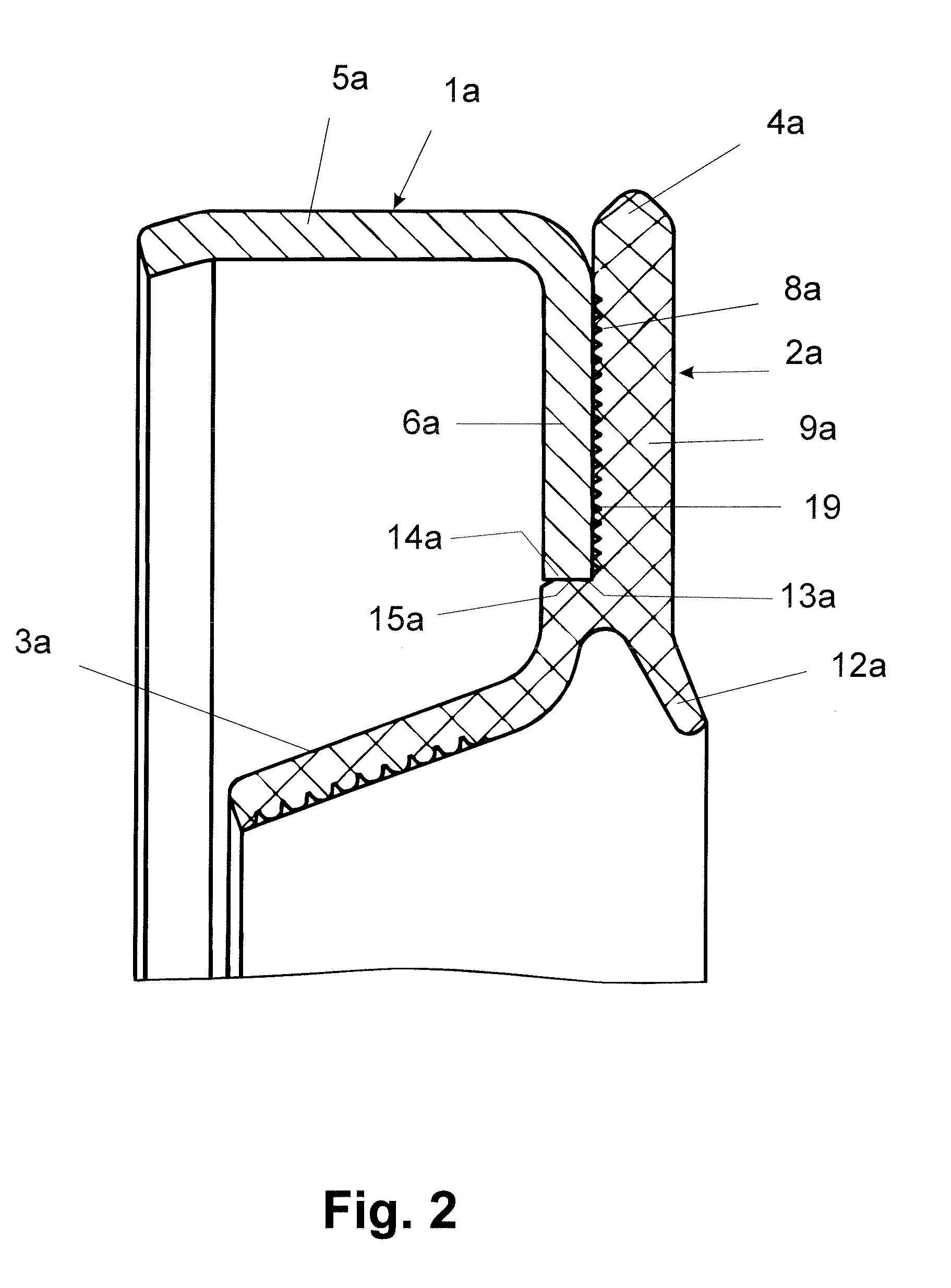Radial Shaft Seal
a radial shaft and sealing element technology, applied in the field of radial shaft seals, can solve the problems of vulcanizing the sealing element, requiring a long processing time, and unable to meet the requirements of the sealing element, and achieve the effect of simple and inexpensive way
- Summary
- Abstract
- Description
- Claims
- Application Information
AI Technical Summary
Benefits of technology
Problems solved by technology
Method used
Image
Examples
Embodiment Construction
[0013]The radial shaft seals illustrated in FIGS. 1 to 4 serve generally for sealing rotating shafts and for sealing spaces with pressure differences of various degrees.
[0014]The seal according to FIG. 1 is comprised of a support body 1, a sealing element 2 having a dynamic seal part 3 and a static seal part 4. The support body 1 is cup-shaped and made of metal, such as conventional steel, carbon steel, galvanized steel, stainless steel, or is made of hard plastic material. Its essentially cylindrical wall 5 passes into a bottom 6 extending radially relative to the axis of the seal. The bottom 6 has a central opening 7 through which a shaft (not illustrated) projects when the seal is mounted. The free end 5′ of the wall 5 is slightly inwardly bent and forms in this way an insertion aid for mounting the seal. Approximately at half the axial length, the wall 5 has at the exterior side a receptacle in the form of a circumferential groove 16 in which the static seal part 4 is arranged. ...
PUM
 Login to View More
Login to View More Abstract
Description
Claims
Application Information
 Login to View More
Login to View More - R&D
- Intellectual Property
- Life Sciences
- Materials
- Tech Scout
- Unparalleled Data Quality
- Higher Quality Content
- 60% Fewer Hallucinations
Browse by: Latest US Patents, China's latest patents, Technical Efficacy Thesaurus, Application Domain, Technology Topic, Popular Technical Reports.
© 2025 PatSnap. All rights reserved.Legal|Privacy policy|Modern Slavery Act Transparency Statement|Sitemap|About US| Contact US: help@patsnap.com



